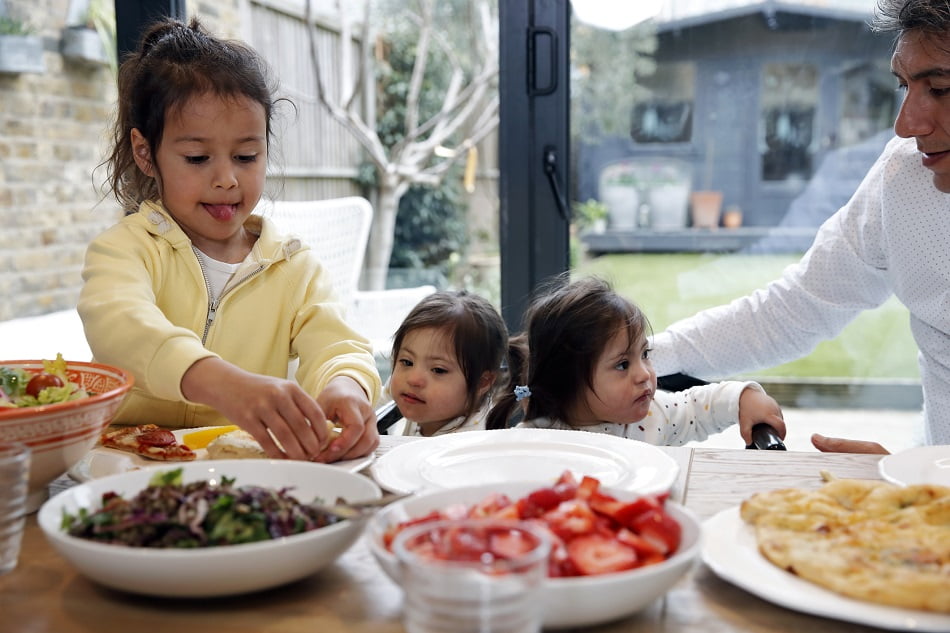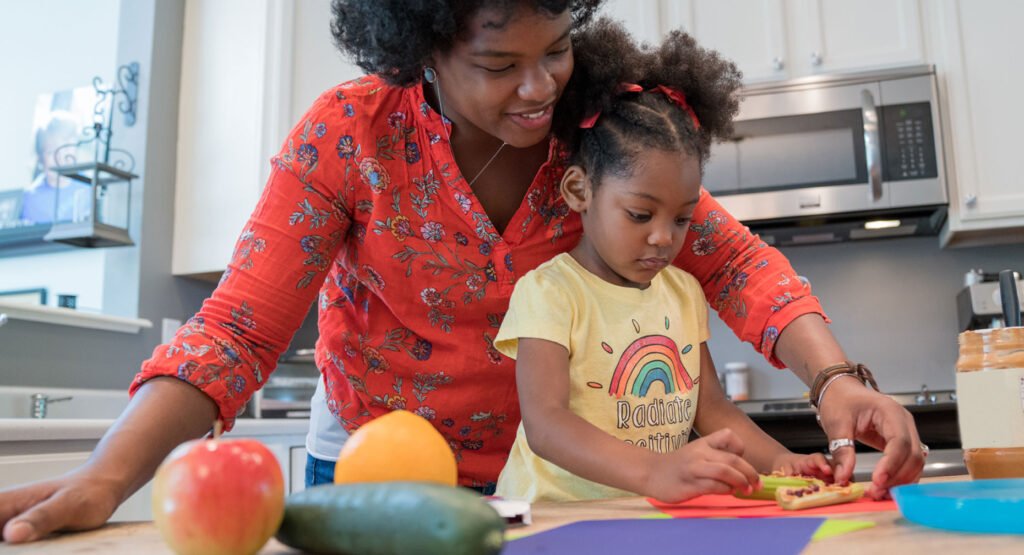10 Expert Tips for Parents Dealing with Picky Eaters
Share

When you become a parent, dealing with kids who are picky eaters can be a challenge.
You want your kid to consume a balanced diet and get the important nutrients, but lunchtime often turns into a battleground. But you are not alone.
A lot of parents deal with picky eaters, and they are in this fight with you. They are also finding different ways to ensure that they get their kids to consume food that is good for their health.
There are many different ways to address picky eating habits in your kids. In this blog, we will explore ten different tips to help you navigate the world of picky eating and help you by creating a fun and positive mealtime experience for you and your kid.
Expert Tips for Parents Dealing with Picky Eaters
1. Patience is the Virtue

When you are a parent of children who are picky eaters, patience is an invaluable virtue. Lunch/Dinner time can be challenging when you are with a child who does not want to try new foods or only wants to eat a limited variety of items. But remember, getting angry or frustrated will not help the situation. It would rather make it worse as it may increase the problem and make your child even more resistant to trying different kinds of foods.
Picky eaters are a time period that many children experience as they try different types of food and develop their own preferences. Their tastes and preferences change, and you, as a parent, find it hard to make them eat food that has good nutritional value.
You can start by offering them a variety of foods during meals, including familiar favorites and new options. You have to be creative with the way you present the food, making the food visually appealing to children. Because a lot of times, it is important for kids to have food that is interesting and fun to look at. But never force your child to eat anything they are not comfortable with.
Creating a positive and fun aura during mealtimes is very important. You have to avoid distractions and engage in conversation with your child. Patience is key when dealing with a picky eater. You can use different plates, spoons, and sprinkles to present food in a way that they start enjoying food rather than dreading it.
2. Show The Kids: Lead by Example

Kids are very good at observing. They always try to imitate adults, and you can use this habit of theirs in your favor. You can show them how fun and fulfilling healthy, nutritious food can be, and you can do that by eating and enjoying food in front of them.
Leading by example is an ideal tool to encourage picky eaters and make them try new foods.
Make an effort to try a variety of foods in front of your child. Be open to trying new flavors and textures, and show your enjoyment of various foods in front of them. Show excitement when trying new dishes, and express your positive experiences with your child. This will make them curious, and you get to explore new foods with them.
You can also take your child to grocery shopping and other cooking activities. Show them how you select fresh veggies and healthy ingredients to create delicious meals. When cooking meals, give them opportunities to chip in age-appropriate ways, such as stirring, measuring ingredients, or choosing toppings on food. This involvement will make them more interested in the food.
Be adventurous, exciting, and open to trying different foods yourself first and then involve your child in the process.
3. Involvement is the Key

Kids are not stupid, and they love to be a part of something. They love to be the center of attention or get an opportunity to chip in with their point of view. That is why you should involve them in your meal planning. You can start that by taking them grocery shopping and letting them make decisions. You can create a positive and interactive experience around food.
When you go grocery shopping, ask your kid for their opinion on what fruits, vegetables, or other healthy items they would like to eat in the meals for the coming days. Encourage them to explore different options and talk about the nutritional benefits of various foods. This conversation will not only make them feel heard but also give them a sense of choice over their food choices.
Think about their preferences to ensure a balanced diet. Incorporate some of their favorite foods and gradually introduce new ones alongside them. This way, your kid will feel more comfortable with trying new foods because they are already enjoying some familiar items.
Encourage picky eaters to be creative and exciting during meal planning. You can turn meal prepping into an event or a dame and make your kids enjoy it rather than making it a chore. You can give it a name and create videos with them that you can look at in the future.
4. Make Them Try a Variety of Food

When you know your children are picky eaters, you can try to solve this problem by giving them an option, and you can give them options when you make them try a variety of different foods. You can start off by offering a variety of foods that are essential in encouraging your picky eaters to explore different tastes and textures.
Try including a colorful variety of fruits and vegetables in your meals, as they provide essential nutrients. Make them try types of proteins such as legumes to ensure a diverse range of nutrients. Include whole grains like brown rice, quinoa, or whole-grain pasta to give a good source of energy and fiber.
When introducing new foods, it’s ideal to do it gradually. Start it by giving a small portion of the new food with familiar items that your child already enjoys. This will minimize resistance and create a more positive and good vibe.
Encourage your child to take small tastes of new foods. Also, even if they do not try to take big bites or do not complete the entire palate of food, do not be angry and talk to them so that they are open to trying new foods in the future.
With picky eaters, patience is the virtue you have to ensure that your kid knows that you listen to them and do not try to force calories into their body. You have to introduce them to new tastes, textures, species, etc.
5. The Power of Presentation

Kids are very visual. Since the day they learn to move, they are always curious about things around them, etc. So, as picky eaters, they try to avoid food that might not look good in their heads. You can solve this problem by presenting food in a way that is attractive to your kid and not the world. You can make a carrot cake and decorate it like a carrot, etc.
You can start by using colorful plates and utensils that catch your child’s eye. Consider using plates with exciting patterns or their favorite characters to make lunchtime feel like a big deal. Use brightly colored bowls and cups to add another touch of visual appeal.
You can cut fruit and vegetables in different shapes by using a food cutter and make eating time into play time, where kids enjoy meals as much as they enjoy playing. Introduce new items by being creative and finding ways to decorate them.
Remember that presentation is not about disguising or hiding foods but rather about being creative with the presentation of dishes.
6. Encourage Kids, Don’t Force Them

When dealing with picky eaters, it’s important to refrain from forcing them to eat certain foods. Forcing can create negative associations with food and turn eating into a task that they hate, making the situation worse. You should rather focus on encouraging your kid to try new foods in a positive and supportive manner.
Let them try a variety of foods during mealtimes, and let your kid make a decision on what and how much they want to eat. Make them taste small bites of new foods, but never put pressure or coerce them into trying something they are not comfortable with. See, preferences will change over time, but if you force them, they might connect food with negativity, and that is when things go wrong.
Try not to make negative comments about foods or use food as a reward or punishment, as this image of putting food into boxes creates problems.
7. The Power of Small Portions

Picky eaters are a task when it comes to making them eat, but you can start off by trying to make them eat in small portions. An entire pizza can be overwhelming, but a slice can be eatable for picky eaters. Give them an option to choose, to eat in a quantity their body wants.
Offering small portions is a practical and effective strategy to help picky eaters feel more open to trying new foods. By starting with smaller bites, you give your child a place to explore new flavors without feeling the need to finish everything on their plate.
When you are making them try new food, serve just a small amount alongside familiar items. With this, your kid can focus on the new item without feeling overwhelmed by the amount of food on their plate.
Be patient and gentle if they don’t finish the new food. Keep in mind that the goal is to create a positive association with the food, not to force them to eat large portions that they hate. With time, as your kid becomes more comfortable with the new taste, you can gradually increase the portion sizes.
8. Make Mealtime into a Game Time

Kids love to get attention and play games that make them feel wanted. Use this point for picky eaters and make mealtime into game time for them. Make eating food fun.
Start by eliminating distractions like TV, smartphones, or other devices during meals. Try to focus on engaging in conversation with your kid. Use this time as an opportunity to reconnect with your little one. Talk to them, ask them questions, listen to them, and play with them.
You can also introduce fun games or activities concerning food. You can play games that involve picking different fruits or vegetables or create games like “Can you guess the secret fruit?” This fun approach can generate curiosity and make trying new foods feel like an exciting adventure.
You can also use the power of storytelling to tell different food stories. This story will make food feel like part of humans and not something that you will hate.
Include your kid’s favorite toys or stuffed animals into the mealtime routine. You can set up a special spot at the table for their “dinner guests,” making the mealtime feel like a party.
9. Food Neophobia

Food neophobia is a normal growing phase in which children feel hesitant or fearful about trying new foods. They can display resistance or refuse to eat unfamiliar items, which can be annoying for parents. But, it’s crucial to understand that this is a common and temporary behavior.
When you are making kids try new food, it’s important to be patient and not force your kid to eat it. Give them time and observe their body, expressions, and the way they are around the food. This will give you an opportunity to study your kid so that you can tell the doctor exactly the things you have noticed.
Celebrate even the tiniest steps your child takes to try new foods. Whether it’s touching, smelling, or taking a tiny taste, acknowledge their effort and offer positive reinforcement. This positive approach can help build their confidence and reduce anxiety around trying unfamiliar foods.
10. Ask a Doctor

If you have tried everything above and still your kid is not eating food. Then now is the time to get professional help. While this is just a phase, and most kids get out of it when your kid is not able to change their habit even after all this? Then, it is time for you to visit a doctor and take medical guidance.
A pediatrician or a registered dietitian can offer a variety of guidance and support to address the underlying issues and develop a personalized plan for your child’s specific needs. It can also provide insights into age-appropriate developmental milestones related to eating habits and offer various ways to overcome any challenges.
When you are visiting a doctor, remember you are not at fault; sometimes, things go out of hand, and you have to call doctors or visit them to get a full test done. Ensure that
seeking professional assistance is not a sign of failure as a parent. Rather, it demonstrates how attentive you are to bring them to visit the hospital and not just let them go out. Working with a pediatrician or registered dietitian can offer you valuable insights, practical strategies, and peace of mind as you navigate your child’s picky eating challenges.
Conclusion
When you are navigating picky eaters, you have to be patient, creative, and open to exploring different ways.
Use the above tips to foster healthy eating habits and encourage a more fun palate on your child’s plate. Keep in mind that picky eating is often a temporary phase that kids can grow out of, and if they do not, then the above steps will teach them ways to try out different foods.
If they still are not eating the right amount of food, then consult a doctor and ask for their help. There is nothing wrong with asking for help.
The internet is filled with advice for parents but do not get overwhelmed. Follow our blog to get answers to all your questions that come with becoming parents.















